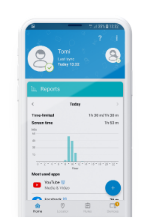The internet is a big place, and it is quite easy to get lost in it, especially for kids. In the era of fake news, posting, sharing and even ChatGPT and other AI tools – it is hard to navigate, even for us!
Digital literacy is challenging for both adults and kids alike. However, it is a little easier for adults. So as usual, it is our responsibility to show our children how to verify information online and create a more cybersafe space.
With essentially anyone being able to create content online, it is crucial to verify what we see and read. Even photos or videos are not a proof. Recently, many people fell for a fake piece of news going around about an earthquake that supposedly happened in 2001. However, all the “proof” was AI-generated. The fake pictures looked so real that many people fell for it.
It is really easy to, at first glance, believe what we see online. It doesn’t only fool us, but also authorities, especially when they are under pressure. These fake pieces of news, hoaxes and misinformation spread like wildfire. They are catchy, clickbait-y and sensational. People share them without verifying first. So how do we verify information online? And how can we teach our children to do the same?
Teach them:
1. That fake news exists – they might not even be aware that such information circles the web. Show them examples, such as the one we mentioned above. Explain why someone might want to post something like that online.
2. That just because it shows up first on Google doesn’t mean it is trustworthy. Search engines don’t list pages in order of trustworthiness.
3. To read more than just the title – the title is often misleading, even if the article or video is real. Read not just the title, but also the entire article.
4. To fact-check – teach them to verify sources. Show them fact-checking sites such as Snopes.com.
5. To check the URL – do you recognize the site name? What does the URL end with? Be wary – some sites are trying to pose as legitimate sources (especially those ending in .co).
6. That they need to ask: Who wrote it? Who is it written for? Is it paid content? Does it include links? How does it make you feel? Are there any typos in the text?
7. That they need to check multiple sources in order to verify what is fake and what is real. Make sure the additional sources are reputable ones.
Talk to them:
It's one thing to encourage kids to create healthy habits online. But it's another to create the habit of thinking. We all are not just consumers of content, but also its creators. We can choose what we share and what we don’t. Make sure you talk to your children about the possible harm they can do by posting harmful or inaccurate content online. Especially on social media.
Make the topic of misinformation, hoaxes and fake news a game. Watch documentaries on how fake news articles are spread and why they are so popular.


